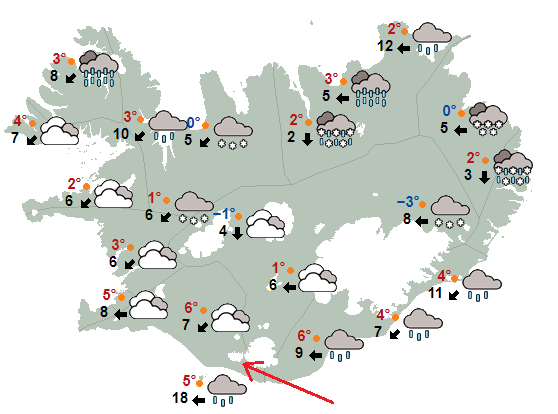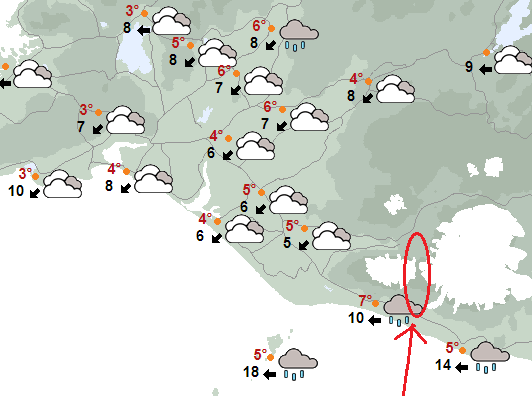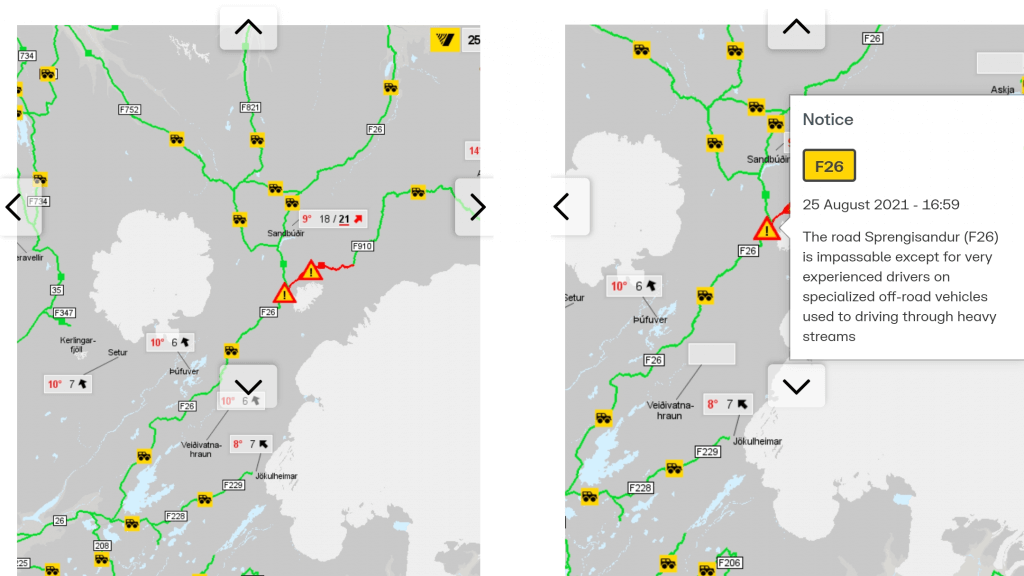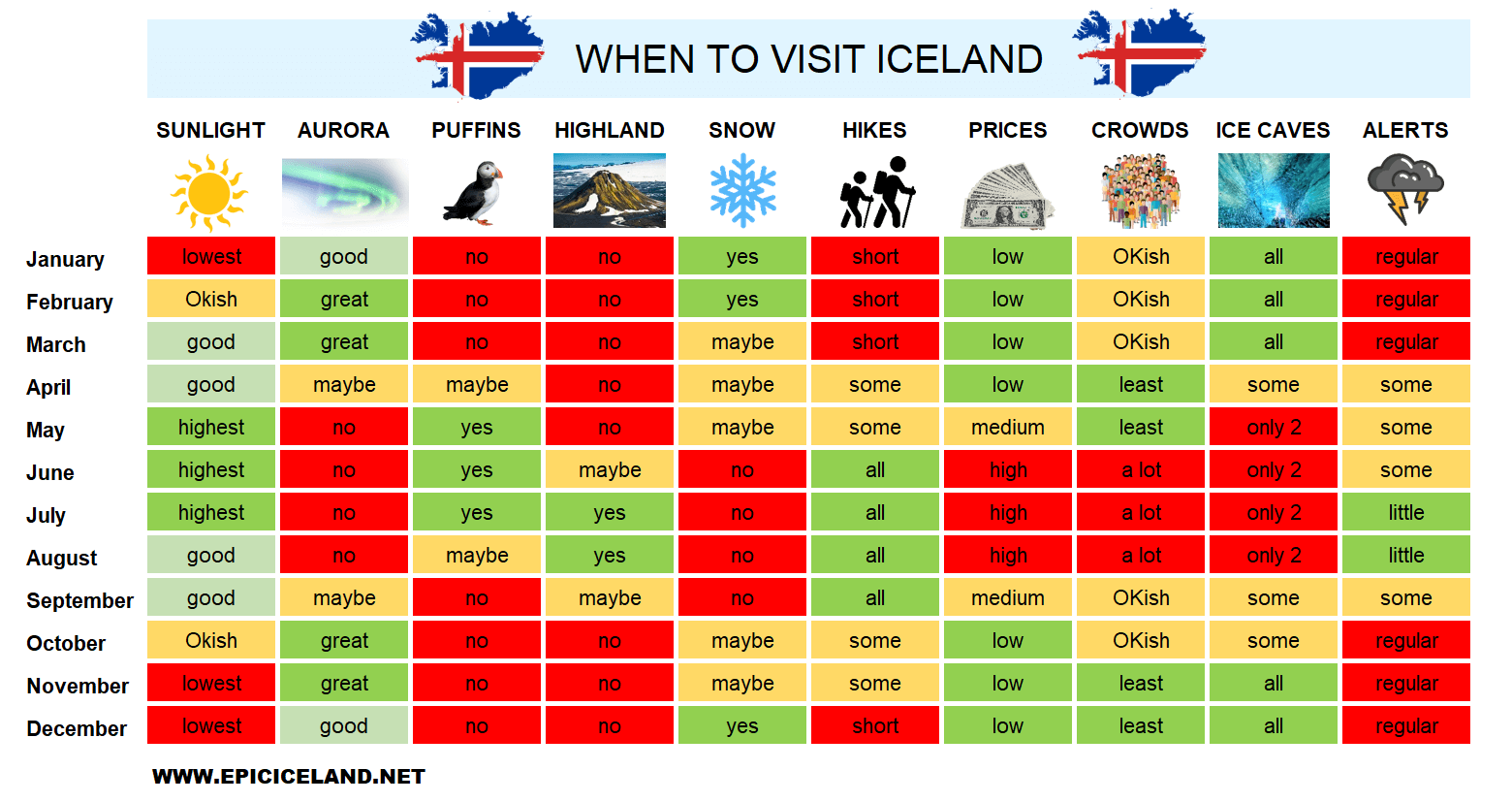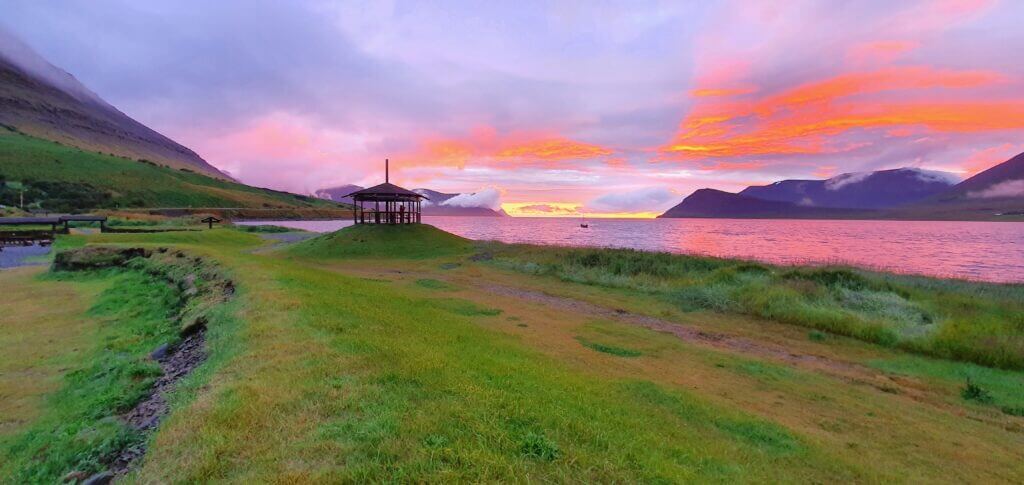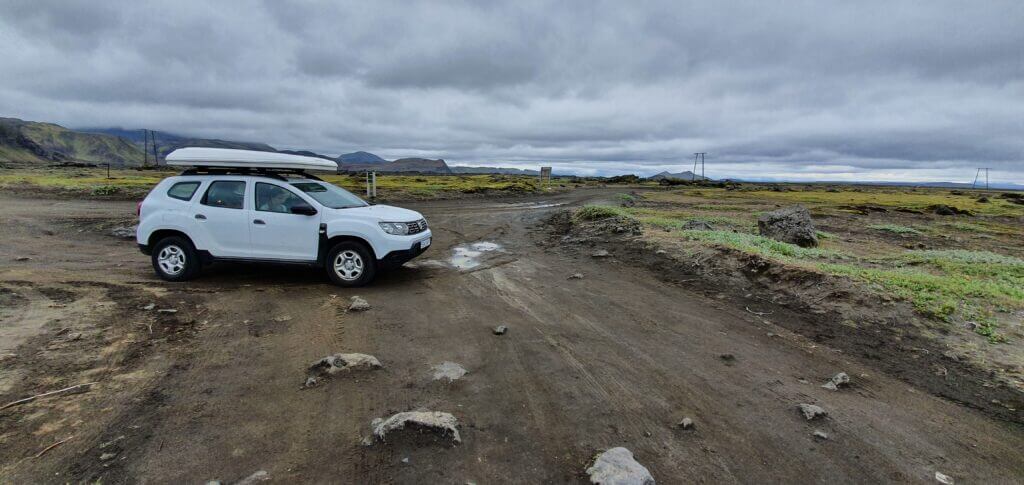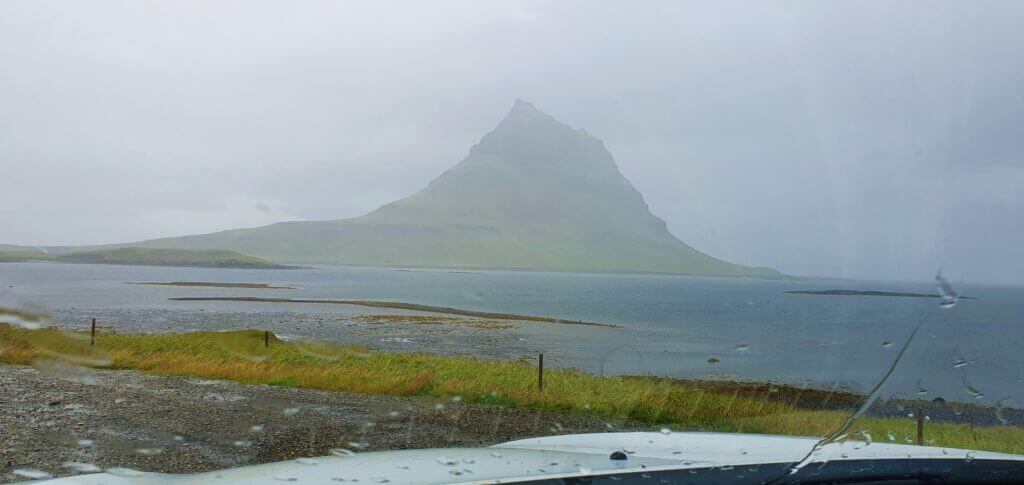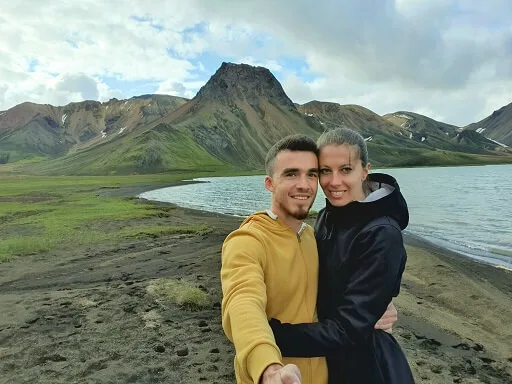The aim of this guide is to help you assess the weather conditions at a particular place during your visit in Iceland. It works best in the summer season (June to September), although we believe there’s a lot of useful info also for the other seasons. Always check first the safetravel.is website and road.is for any travel and road warnings – these are priority number one.
In the winter, please additionally to all rules below – carefully consider also snow conditions and shorter daylight hours.
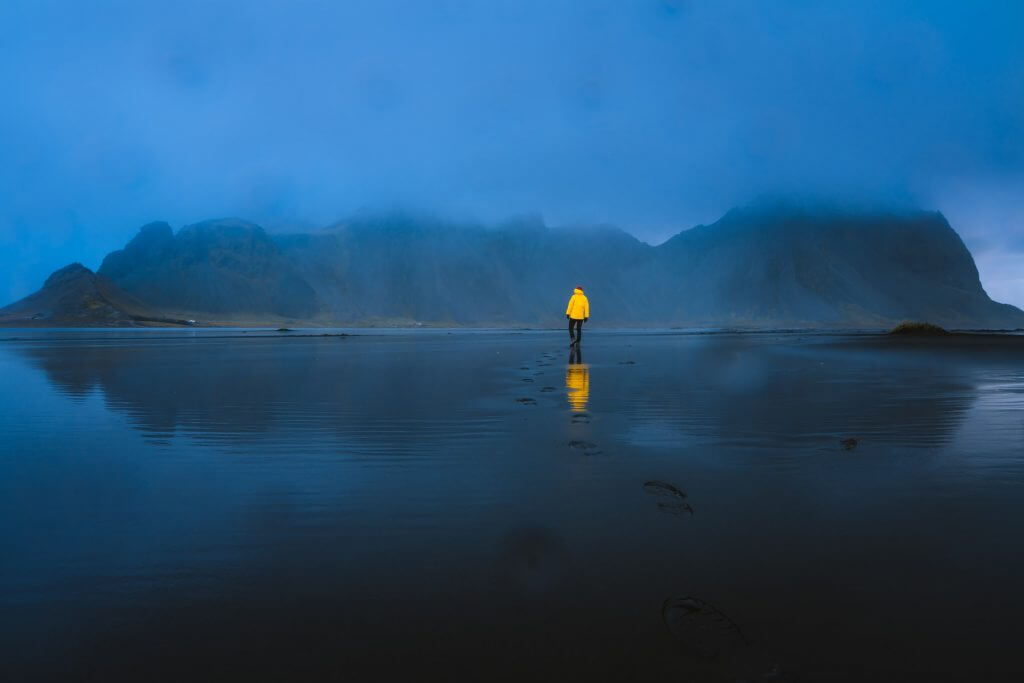
Vestrahorn in rain
Contents
- Beginner’s mistakes in the Icelandic weather forecast
- 1. “The forecast shows rain all of the time!”
- 2. “I looked at en.vedur.is and it shows rain in the south!”
- 3. “I looked at the specific place where I plan to go at en.vedur.is and it shows rain!”
- 4. “I looked at the weather forecast and the next week should be beautiful”
- 5. “The forecast for Fimmvorduhals hike for tomorrow shows nice weather and no rain”
- Where to find the precise Icelandic weather forecast
- How to read the Icelandic weather forecast
- What if it rains everywhere?
- Weather and road alerts
Beginner’s mistakes in the Icelandic weather forecast
1. “The forecast shows rain all of the time!”
Us: OK, what did you look at?
He: “What, what? The forecast!”
Us: OK, but what forecast? 🙂
He: “Like what, what? On google”.
The forecast on Google is from weather.com and this forecast sucks entirely. It usually shows rain everywhere almost all of the time, because there’s a CHANCE it can rain. Yes, there’s a chance everywhere and all of the time in Iceland that it can rain 🙂 But such a forecast is useless. Please when looking at the forecast, look at the official Icelandic meteorological office website en.vedur.is. This is the most precise forecast.
2. “I looked at en.vedur.is and it shows rain in the south!”
OK, once again, what did you look at? This general country forecast?
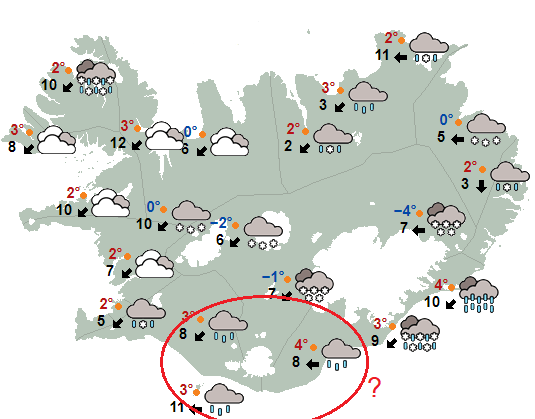
General local Icelandic weather forecast screen
This is a good indication of the entire weather situation in the country, but the weather may change rapidly also LOCALLY. In order to find out what the weather might be at your points of interest, look at the regional/local forecast of the specific place you plan to visit.
3. “I looked at the specific place where I plan to go at en.vedur.is and it shows rain!”
OK, good, and did you look at the intensity of the rain? Did you look specifically at the rain forecast itself, not just a general weather forecast? There’s a section called “precipitation” at en.vedur.is which you should study precisely.
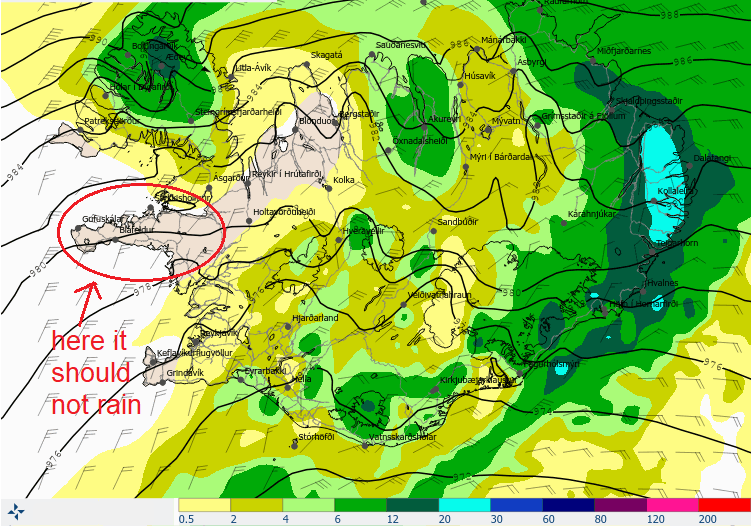
Your best chances for no rain are at Snaefellsnes. Although, it may rain there as well, of course, but probably less than elsewhere.
4. “I looked at the weather forecast and the next week should be beautiful”
OK, good for you, but please don’t rely on a 1-week ahead forecast. This is simply too long for Iceland to hold without changes. It’s more than possible that the 1-week ahead forecast will change entirely. Unfortunately, it is not possible to plan according to the weather that far ahead. In our experience, the forecast becomes very reliable some 1-2 days before the planned date.
5. “The forecast for Fimmvorduhals hike for tomorrow shows nice weather and no rain”
OK, great. The chances are, you are all set for the beautiful day. But never forget to check the WIND as well. The wind may be very strong and dangerous, especially in the mountains. If the weather is generally nice in the summer, the wind usually isn’t that strong. But it may be. So please, better make sure and check the specific wind forecast as well.
Where to find the precise Icelandic weather forecast
In the above lines, we tried to present some examples of how NOT to look at the Icelandic weather forecast. We also mentioned some ways how the forecast can be improved. Let’s summarize them here. So, in the first place – where to find the precise Icelandic weather forecast? At en.vedur.is. This is the official forecasting website of the Icelandic meteorological office and you will hardly find any better for Iceland.
Next thing – don’t look just at the general forecast – icons of sun/clouds/rain, temperature, wind speed. Go more into detail.
Firstly, search for the location of your interest and look at that particular region:
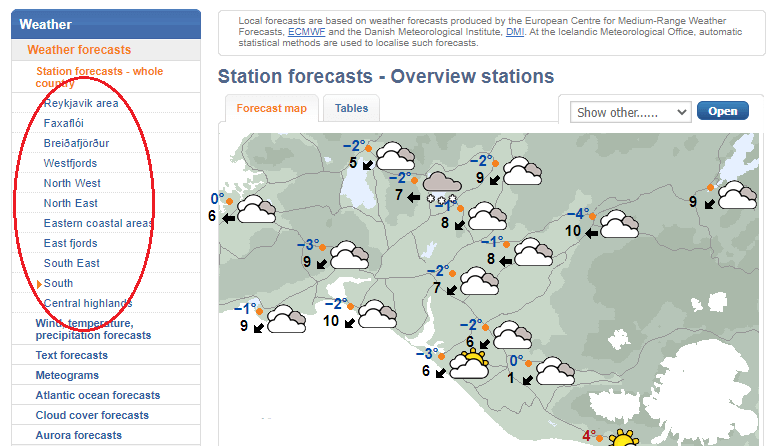
Regional forecast
Secondly, look at the dedicated precipitation forecast and then at the dedicated wind forecast. These are the most precise estimates of rain and wind throughout the country and at your place of interest. We were surprised to realize how many visitors don’t know about these two forecasts at all:
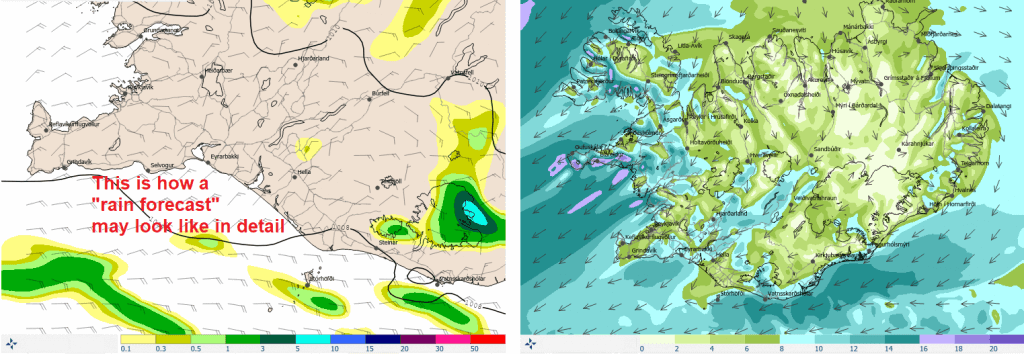
LEFT: This is how a “rain forecast” may look like in detail. Many places with no rain at all! RIGHT: a bit windy weather, better avoid Snaefellsnes!
Thirdly, don’t plan too much ahead (like 1-week or more). The most precise and reliable forecasts are the ones 1-2 days before the desired date.
Fourthly, look at the evolution in time. If the forecast shows no rain just during a particular hour, but rain during all other times, the chances are you will experience rain anyway. On the other hand, if the forecast shows rain just at a particular hour and no rain for the rest of the day, the chances are you will not experience rain at all.
How to read the Icelandic weather forecast
Let’s say you plan to do the Fimmvorduhals hike the day after tomorrow (as we planned here). How to find out as precisely as possible what weather to expect?
First of all, let’s precisely locate the Fimmvorduhals trail in the map of en.vedur.is. After short research you should realize it’s about here:
This (and a few kilometers around) is the place you should be looking at in all of the forecasts. So let’s now locate it in the more detailed regional forecast at en.vedur.is:
Better, but we still don’t know where exactly the rain showers will be and what the wind will be like. So let’s firstly look at the rain forecast:

Fimmvorduhals rain forecast evolution
What we aim for is no rain (default brown-pinkish ground color) or little rain (occasional yellow color). Anything other is just a stronger rain. Always scroll in time throughout your desired day. If there’s no rain at all during all different times, the chances are there will be no rain also in reality.
In the example above, there’s actually no rain at the Fimmvorduhals pass at all. There’s a lot of rain nearby, though. Thus, the chances are, that most likely there should be no rain – if the rain area doesn’t move to the west. Now let’s do the same also with the wind forecast:

Fimmvorduhals wind forecast evolution
Here we aim for the lightest green color. The darker it gets, the worse. Ideally, it should stay at green, or at worse blue – this is already a considerable wind you will feel. Anything worse might be already dangerous. Same as with the rain forecast, please analyze the wind throughout the day. In the example above the wind should be fine.
What if it rains everywhere?
If you look at the detailed local forecast – as we described above – most of the time you are able to find places with little or no rain. This is the strategy we used and thanks to it experienced almost no rain during our last 18-day long trip. Even if the forecast stated rain for most of the country.
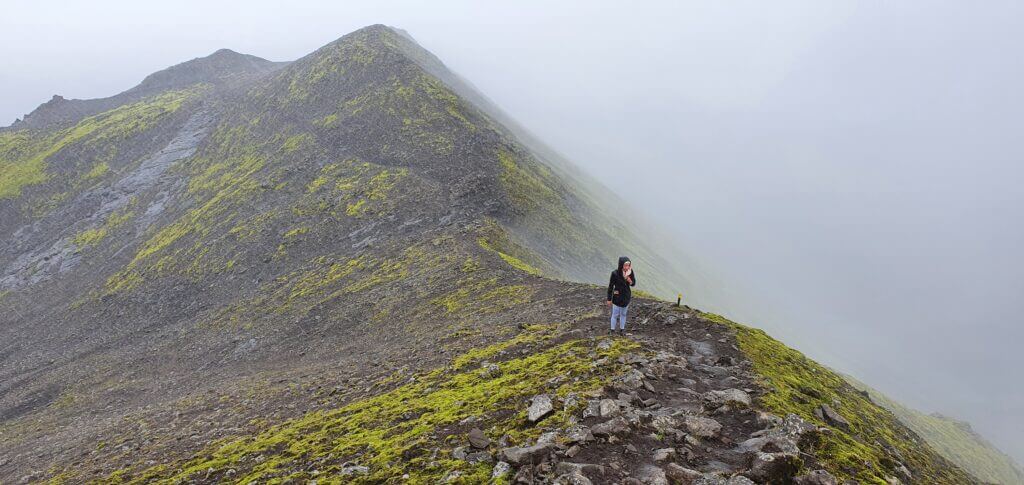
Upper part of the hike on Sveinstindur near Langisjor lake on a foggy day with slight rain
Nevertheless, sometimes there are really days when it simply rains almost everywhere and almost during the entire day. Does it mean your day is completely lost then? Not at all. Although your options are a bit narrowed down, you still have plenty of them. We wrote an entire article about what to do when it rains in Iceland.
Weather and road alerts
The most important thing to look at – and to begin with – is the weather and road alerts. You can find most of these summarized on the website www.safetravel.is. Weather-related alerts are also to be found on en.vedur.is. Road-related warnings are displayed on road.is.
Please always CHECK THESE FIRST. If everything is OK, then proceed with the planning of your trip further. These alerts appear all year round in various forms, so please read them daily.
For example, during our stay in August, it rained a bit more for 3 days and some of the roads became impassable even in the middle of the summer. We planned to cross the country via F26, only to realize the day before the trip that it was marked impassable due to the high water level in the Hagakvisl river. We had to change our plans, but better to change your plans than to get your 50 000 Eur worth car rental drown in the river. Or worse – to end up in the river yourself.
The other day there was a strong wind warning for the Snaefellsnes peninsula, hence we decided not to travel there. All of these warnings are useful and can help you save time, nerves, health, and money.
We hope this guide helped you at least a little bit with the planning of your trip. If you have any questions or ideas, always feel free to post them in the comments section.


